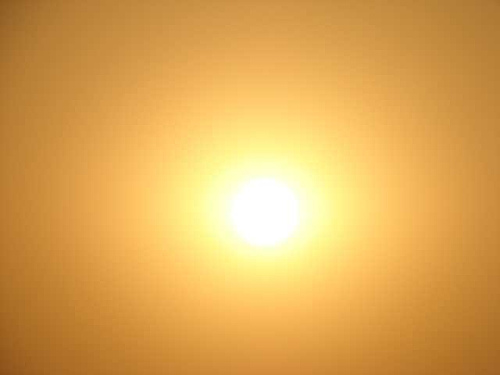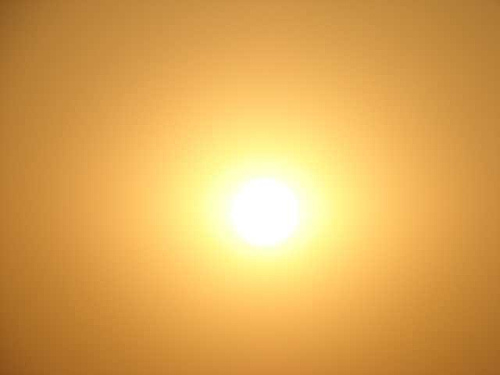Send your question to Umbra!
Q. Dear Umbra,
I work outside six to eight hours a day in a garden and field. I use a basic sunscreen (zinc oxide since I developed an allergy to the chemical slathers). I want to know if the claims by makers of sun-protective clothing make them worth a try. Filson and Tilley are two brands. Are their products any better than a regular long-sleeve shirt or cloth hat that is not sunblock rated? What’s the story?
Phil Hearne
Afton, Va.
 How best to protect yourself from this?Photo: Jalal Hameed BhattiA. Dearest Phil,
How best to protect yourself from this?Photo: Jalal Hameed BhattiA. Dearest Phil,
As a Seattleite often crouched in the sunless bowels of Grist’s reference archives, I envy the vitamin D and fresh air you get (if not the UVA and UVB exposure). Sun-protective clothing is a new one — and to be honest, at first it sounded like a crock. Is the clothing merely doused in sunscreen? Covered in tin foil? I donned my sunglasses and vowed to get to the bottom of this.
I’ll skip the skin cancer lecture and cut right to the chase. Sun-protective clothing gets rated with an Ultraviolet Protection Factor (UPF) starting at 15 and going up over 50 (higher is better), reflecting how well the clothing keeps out UVA and UVB rays. Think of it as the SPF for your clothes.
How well your normal clothes keep out ultraviolet rays will depend on their materials (polyester and nylon are best, sun-wise if not otherwise), dyes, and treatments. “Expert advice” from REI advises that a normal T-shirt could have a UPF of anywhere from five to 15, meaning somewhere between 7 and 20 percent of the UV rays are making it through to your skin. Clothing with a UPF rating of over 50 (“excellent”), for example, lets in less than 1/50th of UV rays. So yes, there is a difference — especially seeing as you’re outside all day — but it’s hard to say exactly how much.
If your clothes are thick and tightly woven, they may have a higher UPF than average — that’s one way manufacturers increase the rating. The Skin Cancer Foundation says “a long-sleeved dark denim shirt offers an estimated UPF of 1,700 — which amounts to a complete sun block.” Special dyes and treatments can also increase a garment’s UPF (although that instantly raises my hackles). While washing clothes apparently boosts the UPF, thanks to detergents, getting them wet while wearing decreases it. Just something to keep in mind before running through the sprinkler.
As for the brands you mentioned, one of Filson’s shirts is treated with SPF 30, making a dark denim shirt a better choice. Tilley, however, claims most of its clothing is UPF rated at over 50. One long-sleeved shirt in navy was tested and certified with a 50+ UPF rating — but it’ll set you back $120. Ouch. Remember our mantra to buy less (and buy used)? If you’ve got a dark, thick shirt already doing the trick, I’d say you’re all set.
Sunnily,
Umbra



